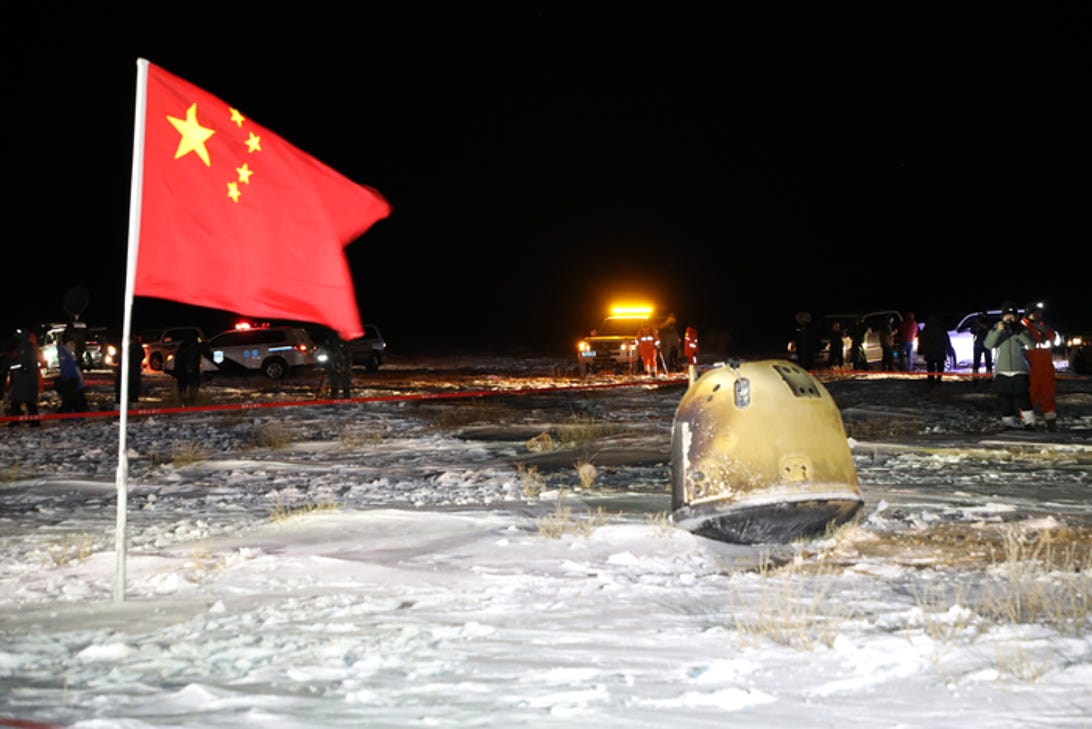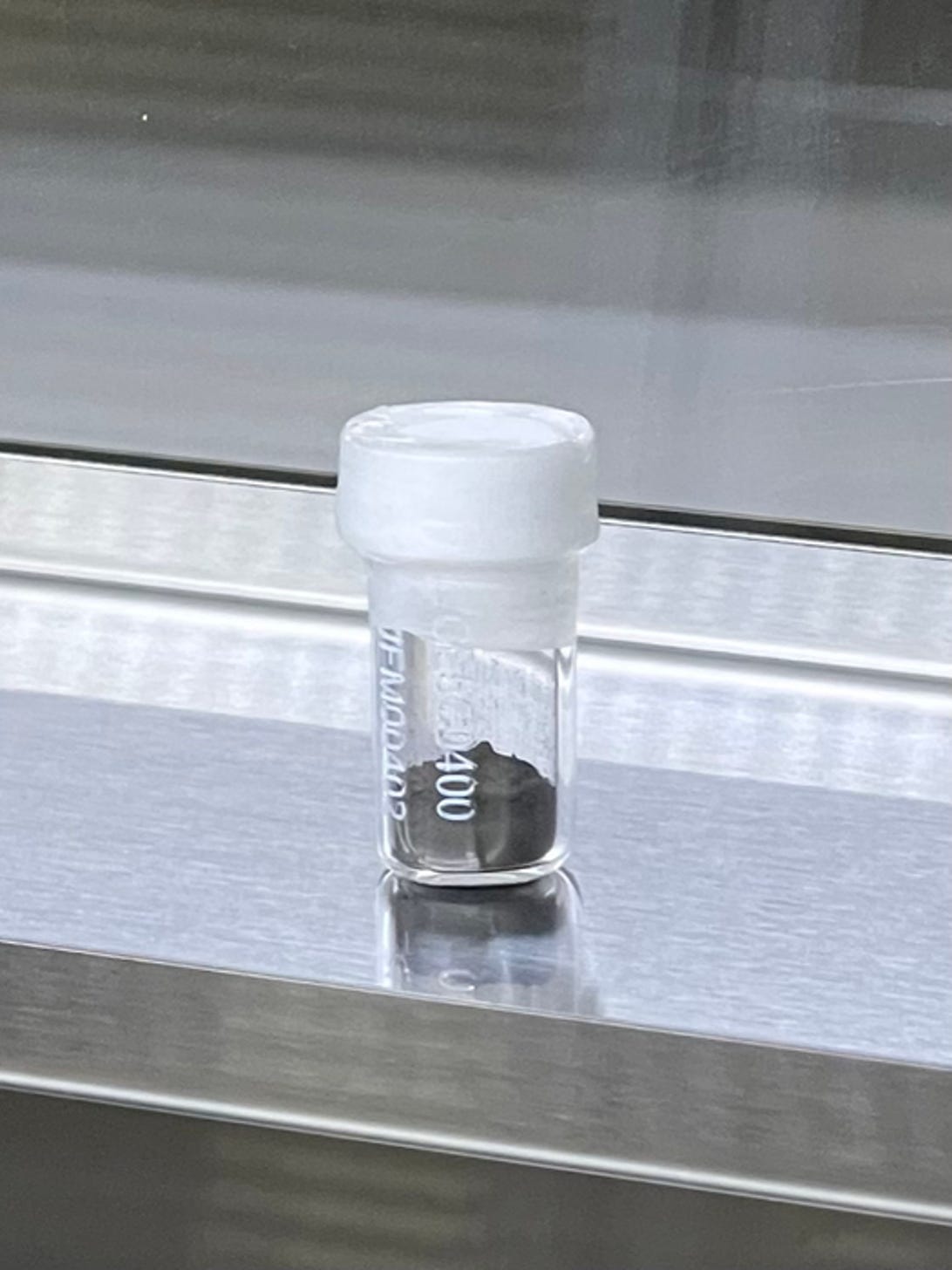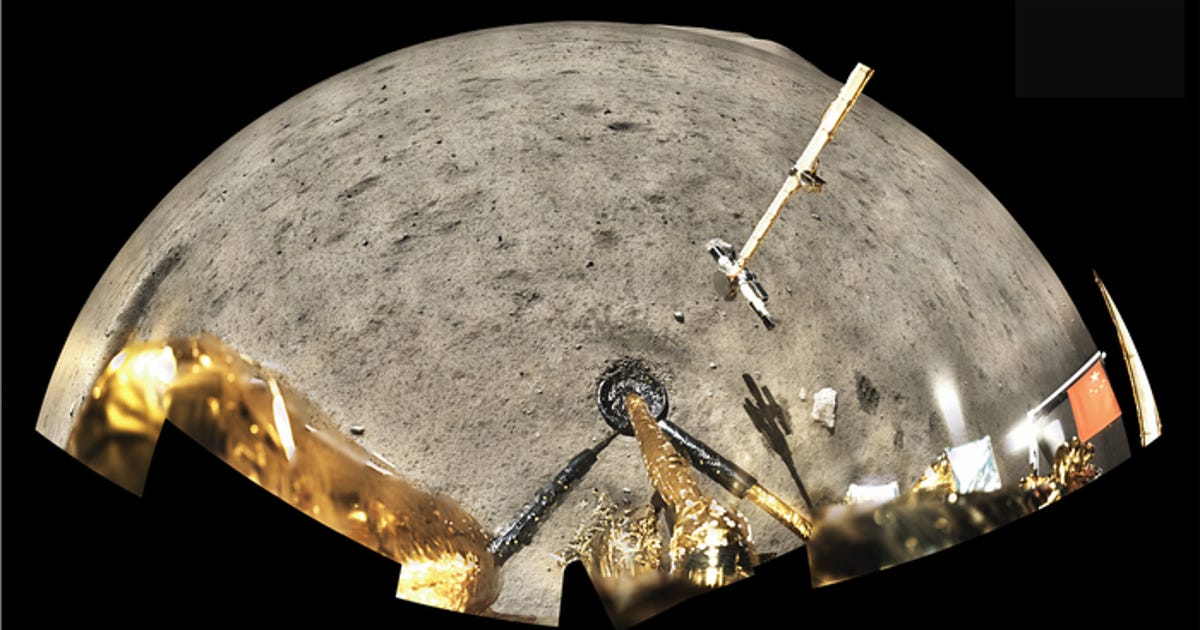First moon rocks returned to Earth since 1976 years may alter lunar history

Chang’e 5 landing site overview.
Chinese National Space Agency’s Lunar Exploration and Space Engineering Center
Late last year, a Chinese space capsule delivered fresh moon samples to Earth for the first time in about four decades, and these precious lunar rocks just revealed a new detail about our planet’s glowing companion. Its volcanoes were alive and active considerably longer than scientists thought.
“All our experience tells us that the moon should be cold and dead 2 billion years ago. But it is not, and the question is, ‘Why?'” said Alexander Nemchin, a professor of Geology at Australia’s Curtin University and author of the analysis published Thursday in the journal Science.
Alongside an expansive and international team of researchers, Nemchin discovered that some of the newly transported moon rocks contain lunar fragments from later days of the white orb’s timeline. Dated about two eons ago, these fragments are relatively young. But here’s the kicker: Those same pieces are also remnants of a volcanic eruption.
Connecting the dots, the team members realized they were looking at solid confirmation that the lunar surface was alive pretty late in the game.
“We need to dig deeper with this,” Nemchin remarked. “We are highlighting that our current views need readjustment — further research will tell how dramatic this readjustment should be.”
Welcome back, lunar research
The saga began last year in December, when China’s Chang’e 5 mission sent a spacecraft to scrape the surface of the moon and collect a variety of rock and dust samples for Earth-based analysis. It returned with about 4 pounds (2 kilograms) of extraterrestrial material.

Chang’e 5 sample return capsule
Chinese National Space Agency’s (CNSA) Lunar Exploration and Space Engineering Center
The year 1976 marks the last time lunar samples were brought down to our home planet, an achievement of the Soviet Union’s Luna 24 mission. But before that, NASA’s Apollo missions were running the course from Earth to the moon several times — the crusades returned photographs, moon rocks and personal anecdotes of astronauts.
“There was some need and drive to do this 50 years back,” Nemchin explained. “Then, priorities changed and everybody moved to something else.” But now, he says, “we have the moon back in the focus.”
He notes lunar research is important not only from an astronomy perspective, but also because any effort to travel to the moon — or really, any space exploration — tends to expedite technologies that ultimately benefit us on Earth.
One example of such serendipitous tech comes from Australian physicists’ research in the ’90s. They developed a highly complex mathematical tool hoping to detect smeared signals of black holes that vanished in the cosmos. Unfortunately, they never found any — but their invention paved the way for modern-day Wi-Fi.
Moon rock science
“Every new sample gives us a big boost in understanding what is happening, simply because we still have so few of them,” Nemchin remarked. “Apollo samples have been worked on for the last 50 years and are still actively investigated.”
While analyzing the rocks brought back by Chang’e 5, Nemchin and fellow researchers first checked out what types were present. In particular, they were after basalt fragments, which are correlated with volcanic activity.

Lunar soil sample CE5CO400 allocated to Beijing SHRIMP center for the study
Beijing SHRIMP Center, Institute of Geology, CAGS
“We needed to get an idea about chemical composition of the fragments to be able to compare [them] to the large basaltic field visible from the orbit,” he said. “And, make sure [those] fragments represent this field of basalts and do not come from somewhere else.”
Then, the scientists confirmed specific ages of the pieces of interest. Validating that these fragments are young was one of the main goals of the mission. That’s how the team members expected to prove their hypothesis of the moon having active volcanoes more recently than textbooks suggest.
“All basalts we had before are older than 3 billion years,” Nemchin said. “We also had a few very young points determined from material ejected by very young impacts — impact melts — but nothing in between. Now we have a point right in the middle of the gap.”
Such age determinations are called crater counting, something the team hopes to continue doing in the future in order to attain the full array of rocks to map out each generation of the moon. Nemchin also notes that a few interesting chemical features were found in the basalt samples, including high iron content, which isn’t present in any other retrieved pieces of the lunar surface.
Further chemical research on the rocks, he says, will help answer new questions introduced by the team’s novel findings, such as searching for the source of heat that led to lunar volcanic activity a couple of billion years ago.
And at the end of the day, the Australian geologist emphasizes that “what is important for me in all this is that we managed to bring a large international group of people to work on the sample.”
“Somehow,” he added, “In the current situation when international travel is still rather restricted, I had more interaction with different people than in the previous years when we could move around any way we liked.”
For all the latest world News Click Here

